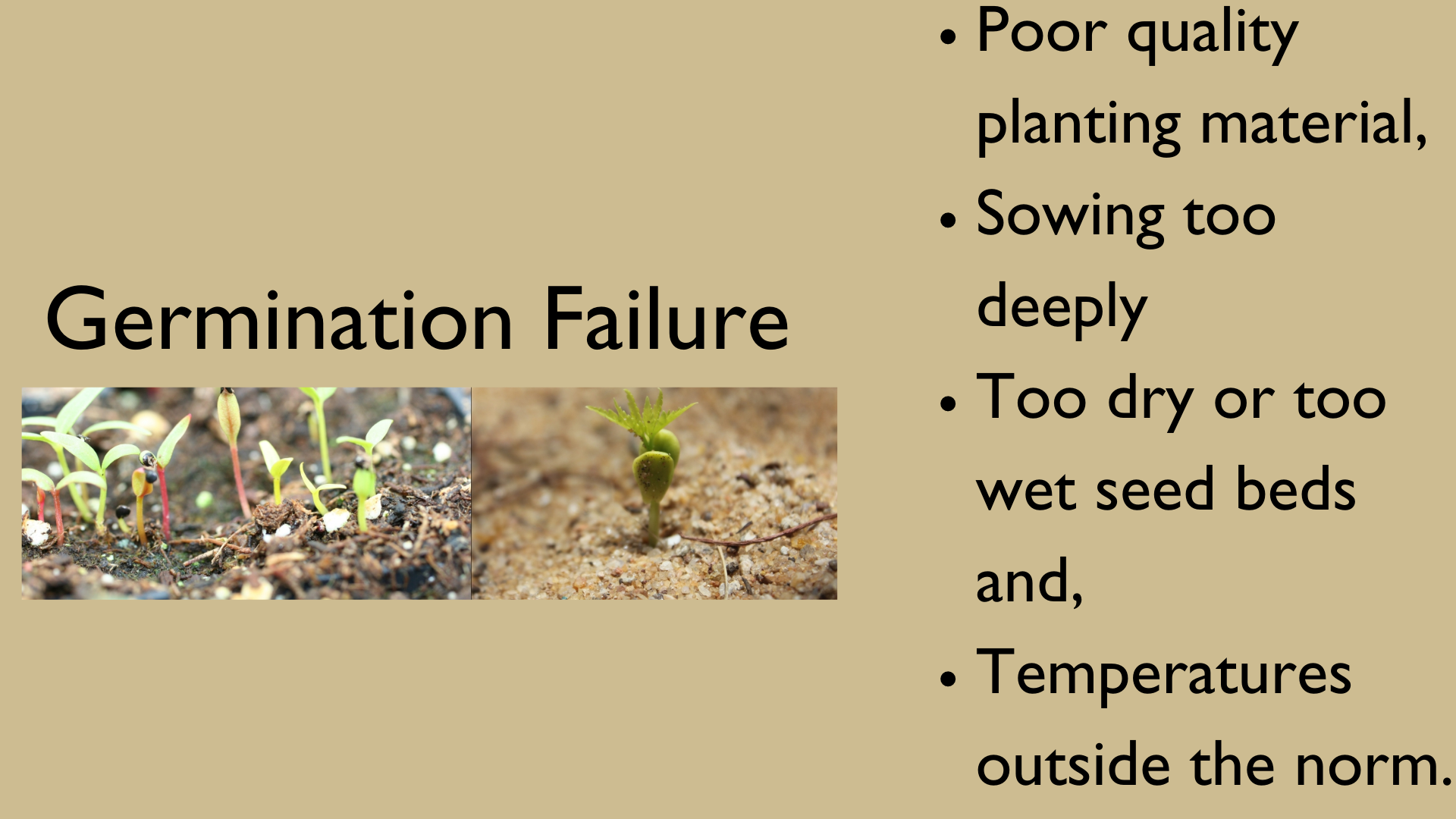Planting material differs for different crops. Crops are propagated through seeds, seedlings, bulbs, tubers, plant cuttings, grafting or budding and plating of nursery reared grafted trees. There are a number of handling requirements that are necessary to ensure maximum survival and optimal growth of the established crop.
Seeds and Bulbs
Seeds and bulbs must be are stored in a cool, dark and dry area until such time that they are to be sown or planted. The same principle applies to propagation materials such as potato tubers. Other seeds such as tobacco, cabbage and tomatoes are established in seedbeds from which they are transplanted into the open soil. More expensive or very small seeds like some vegetable and flower seeds are planted in seed trays kept in a controlled environment where the seed germinate, and seedlings are kept until they are strong enough to be transplanted.
Irrespective of the kind or type of planting material used in propagation, the preparation of the soil or seedbed prior to the establishment is critical. Planting material, especially seeds, must be in close contact with the soil to enable them to absorb water for germination.
The soil should therefore be well prepared before planting. Soil can be prepared using a shovel or a fork, and in the case of larger-scale plantings, a tractor, plough, disc plough or other mechanical equipment can be used. Soil preparation generally includes the application of the appropriate amounts of fertiliser. Seedling and cuttings should be irrigated directly after planting.
Remember:
- Use certified seeds of recommended cultivars for your area.
- Obtain planting material from reputable companies.
- Follow planting recommendations regarding planting time, planting depth and plant spacing
- Consider weather conditions before planting.
- Plant in straight rows.
- Fertilise according to fertilisation recommendations from soil fertility analysis.
The main reasons for germination failure are:

When establishing seedlings or cuttings, the following should be noted:
- Seedlings are grown from seed. A week before transplanting, seedlings should be ‘hardened off’ by exposing them to full sunlight for a few hours per day. This will assist in the seedlings adjusting to field conditions where no shade will be available.
- Before planting, remove any dead or dying seedlings.
- Water the seedlings before planting.
- Pre-prepare the planting area
- Try to plant on an overcast day, and never plant in the heat of the day. Aim at planting late afternoons allowing seedlings and cuttings a night to recover. Seedlings will not tolerate full sunshine before or after planting. Poor pre-planting care will lead to seedling losses.
- Once planted, seedlings and cuttings should be watered immediately. A fine mist spray is most effective. This should not be done during the heat of the day.
- Watering must be conducted carefully ensuring that the water does not wash away the freshly prepared soil and expose the roots of the seedling.
- Ensure that the seedlings or cuttings that have not been planted are protected from direct sunlight and have adequate water, as they will dry out and die very quickly if poorly treated.
- All newly planted crops should be monitored for the overall survival rate, of weak and diseased plants. If dead or damaged seedlings are removed, they should be replaced with fresh seedlings. It would be useful to carry a wheelbarrow full of replacement seedlings to replace those that have died in the crop as you do the inspection. Don’t forget to water the seedlings before and after planting.
Hygiene Standards
All equipment and tools should be clean and properly sterilized before starting with the propagation. Disinfectants on the market are, household ‘Jik’, chlorine used for swimming pools, ‘Sporekill’ and ‘Praslin’. Apart from personal hygiene, workers must wash their hands and preferably wear sterilized rubber gloves when working with growing media and propagation material. The reason for this is that the equipment and propagation material can be infected with fungi, bacteria or viruses that can cause diseases and eventually affect the production of the crop.
When using seed as propagation material, the seed can be sterilized or treated with fungicides.